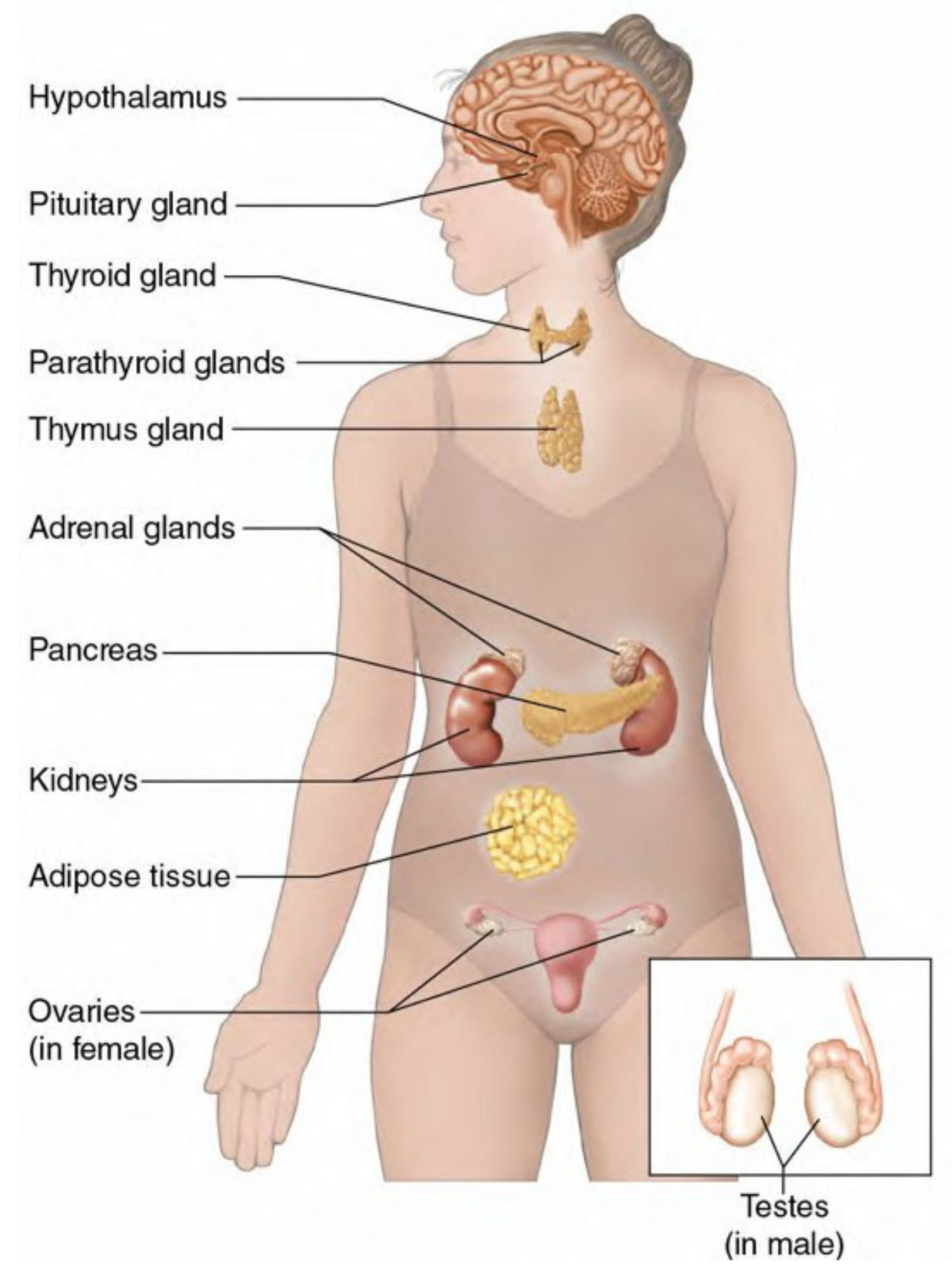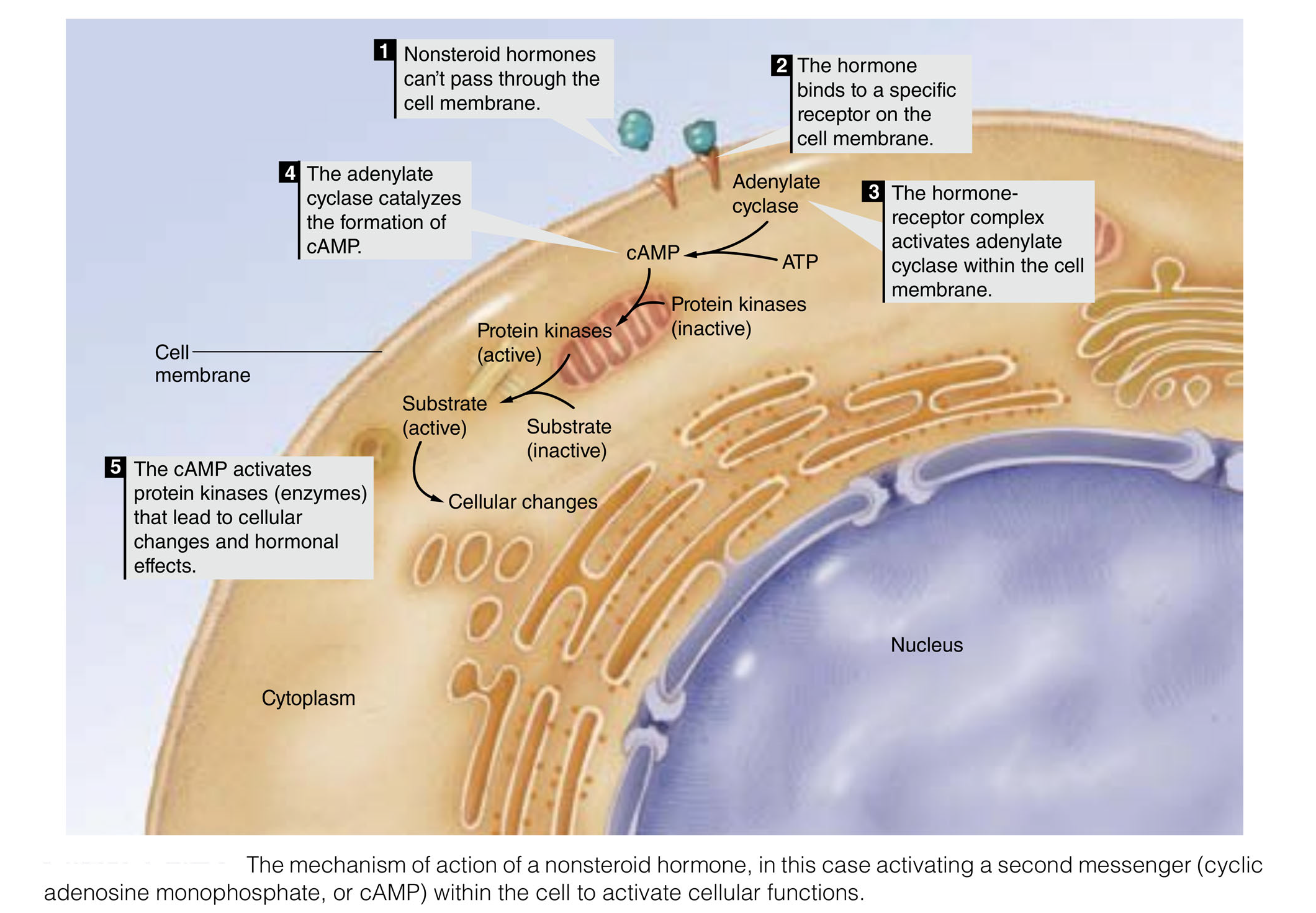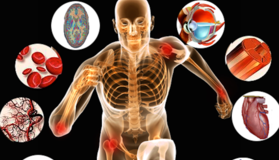Chapter 4
HormonalControl During Exercise
The EndocrineSystem
As the body transitions from a resting toan active state, the rate of metabolism must increase to provide necessaryenergy. This requires the coordinated integration and communication of manyphysiological and biochemical systems. Although the nervous system isresponsible for much of this communication, fine-tuning the physiologicalresponses to any disturbance in homeostasis is primarily the responsibility ofthe endocrinesystem. The endocrine and nervous systems, often collectivelycalled the neuroendocrine system, work in concert to control all of thephysiological processes that support exercise.The nervous system functionsquickly, having short-lived, localized effects, whereas the endocrine systemresponds more slowly but has longer-lasting effects.
The gereral mechanism of action of a typicalsteroid hormone, leading to direct gene activation and protein synthesis.
The mechanism of action of a nonsteroidhormone,in this case activating a second messenger (cuclic adenosine monophosphate,orcAMP )within the cell to cctivate cellular functions .


The nervous system functionsquickly, having short-lived, localized effects, whereas the endocrine systemtypically responds more slowly but has longer-lasting effects.
Hormones are classified chemicallyas either steroid or nonsteroid. Steroid hormones are lipid soluble, and mostare formed from cholesterol. Nonsteroid hormones are formed from proteins,peptides, or amino acids.
Hormones influence specific targettissues or cells through a unique interaction between the hormone and thespecific receptors for that hormone on the cell membrane (nonsteroid hormones)or within the cytoplasm or nucleus of the cell (steroid hormones).
Hormones generally are secretednonuniformly, often in brief pulsatile bursts, into the blood and thencirculate to target cells.
A negative feedback systemregulates secretion of most hormones.
The number of receptors for aspecific hormone can be altered to meet the body's demands. Upregulation refersto an increase in available receptors, and downregulation refers to a decrease.These two processes change a cell's sensitivity to a given hormone.
Steroid hormones pass through cellmembranes and bind to receptors in the cytoplasm or nucleus of the cell. At thenucleus, they use a mechanism called direct gene activation to cause proteinsynthesis.
Nonsteroid hormones cannot easilyenter cells, so they bind to receptors on the cell membrane. This activates asecond messenger within the cell, often cAMP, which inturn can trigger numerouscellular processes.
Prostaglandins are not hormones bystrict definition but act as “local” hormones,exerting their effect in theimmediate area where they are produced.
In Closing
In this chapter, we focused on therole of the endocrine system in regulating some of the many physiologicalprocesses that accompany exercise. We discussed the role of hormones inregulating the metabolism of glucose and fat for energy metabolism and the roleof other hormones in maintaining fluid balance. We touched on some of therelatively new findings about how hormones regulate appetite and calorieconsumption. We next look at the related topics of energy expenditure andfatigue during exercise.
Study Questions
1.What isan endocrine gland, and what are the functions of hormones?
2.Explainthe difference between steroid hormones and nonsteroid hormones in terms oftheir actions at target cells.
3.How canhormones have very specific functions when they reach nearly all parts of thebody through the blood?
4.Whatdetermines plasma concentrations of specific hormones? What determines theireffectiveness on target cells and tissues?
5.Definethe terms upregulation and downregulation. How do target cells become more orless sensitive to hormones?
6.Whatare second messengers and what role do they play in hormonal control of cellfunction?
7.Briefly outline the major endocrine glands, their hormones, and the specificaction of these hormones.
8. Whichof the hormones outlined in question 7 are of major significance duringexercise?
9. Whathormones are involved in the regulation of metabolism during exercise? How
do theyinfluence the availability of carbohydrates and fats for energy during exerciselasting for several hours?
10.Describe the hormonal regulation of fluid balance during exercise.
11.Discuss the sources and function of the hormones cholecystokinin, leptin, andghrelin, and explain how they are interrelated.


